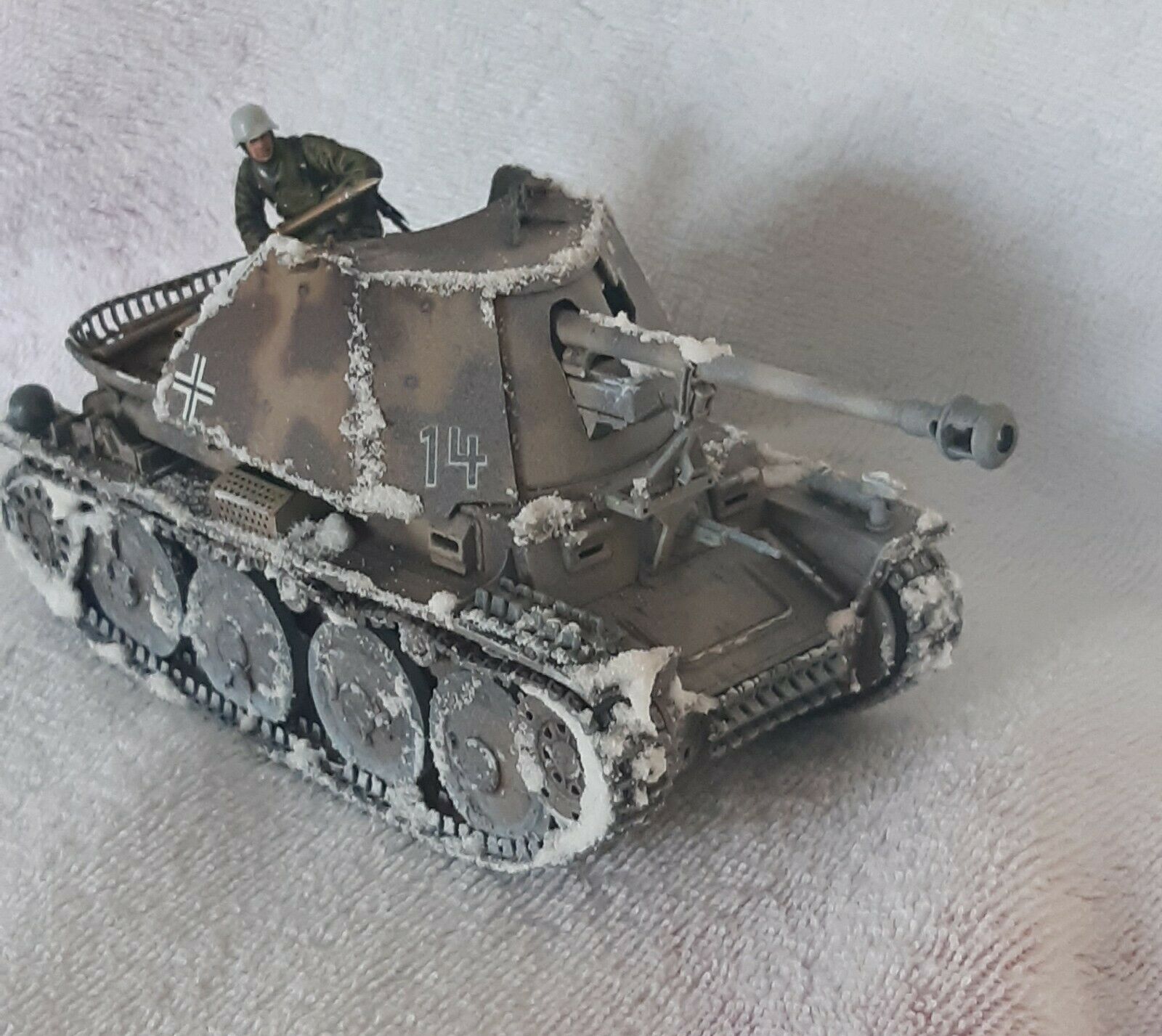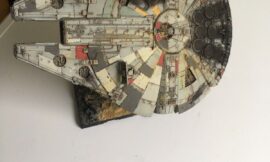The Marder III was a series of German tank destroyers used during World War II, built on the chassis of the Panzer 38(t). The Marder III series included several variants, one of which was the Marder III Ausf. H, or Marder III H. This vehicle was developed to provide the German army with an effective means of countering increasingly well-armored Allied tanks.
Development and Design
The Marder III H (H standing for “Heckmotor,” indicating the rear-mounted engine) was developed as part of Germany’s efforts to quickly adapt available chassis to mount more powerful anti-tank guns. This adaptation process began in earnest following the invasion of the Soviet Union in 1941, when German forces encountered heavily armored Soviet tanks such as the T-34 and KV-1, which their existing anti-tank weapons struggled to defeat.
The Marder III H was based on the reliable and widely used Panzer 38(t) chassis, originally a Czechoslovakian design. This chassis was chosen due to its robustness and mechanical reliability. To transform it into a tank destroyer, the turret was removed and replaced with a fixed superstructure to house the main armament.
Armament and Capabilities
The primary armament of the Marder III H was the 7.5 cm Pak 40 anti-tank gun. This gun was capable of penetrating up to 135 mm of armor at 100 meters with standard armor-piercing rounds, making it effective against most Allied tanks of the time. The Pak 40 was mounted in an open-topped fighting compartment, providing the crew with excellent visibility and a wide arc of fire, but leaving them vulnerable to small arms fire, shrapnel, and adverse weather conditions.
Secondary armament typically included a 7.92 mm MG 37(t) machine gun for defense against infantry and light vehicles.
Armor and Protection
The Marder III H had relatively thin armor compared to fully enclosed tanks, with frontal armor up to 50 mm thick, side armor around 15 mm, and rear armor of 10 mm. This was sufficient to protect against small arms fire and shell splinters but left the vehicle vulnerable to heavier weapons and close combat threats.
The vehicle’s open-top design, while advantageous for crew visibility and gun operation, meant that the crew was exposed to airburst artillery, small arms fire, and other battlefield hazards.
Mobility and Performance
The Marder III H was powered by a Praga EPA/2 6-cylinder engine, producing 125 horsepower. This provided the vehicle with a top speed of around 42 km/h (26 mph) on roads and somewhat less off-road. The suspension system, based on the Panzer 38(t) design, offered good cross-country mobility, which was essential for the hit-and-run tactics often employed by tank destroyers.
Operational History
The Marder III H saw extensive service on all fronts where German forces were engaged, particularly on the Eastern Front. It was used effectively in ambush roles, taking advantage of its powerful gun to destroy enemy tanks from concealed positions. Its mobility allowed it to relocate quickly after firing, reducing the risk of return fire.
Despite its effectiveness, the Marder III H had significant limitations. The thin armor and open fighting compartment made it highly vulnerable, and the lack of a turret restricted its ability to engage targets rapidly from multiple directions. Nevertheless, it was a valuable asset for German anti-tank units, providing much-needed firepower during critical phases of the war.
Legacy and Impact
The Marder III H exemplified the German approach to improvising solutions to immediate battlefield problems using available resources. While it was not a perfect vehicle, it filled an urgent need for more effective anti-tank platforms during a critical period of the war. The lessons learned from the Marder series influenced subsequent German and post-war tank destroyer designs, emphasizing the importance of powerful main guns and mobility in anti-tank warfare.
Conclusion
The Marder III H was a pragmatic response to the challenges faced by German armored forces during World War II. By mounting a potent anti-tank gun on a reliable chassis, it provided a much-needed boost to Germany’s anti-tank capabilities. Although it had vulnerabilities, its role in the conflict demonstrated the effectiveness of quickly adapting existing vehicles to meet new threats on the battlefield. The Marder III H remains a notable example of wartime innovation and adaptation.
4o














